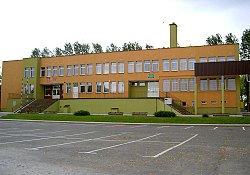기상학
Meteoritics운석학은[note 1] 운석, 운석, [note 2][2][3]운석을 다루는 과학이다.그것은 우주 화학, 광물학, 지구 화학과 밀접하게 연관되어 있다.운석을 연구하는 전문가는 운석학자로 [4]알려져 있다.
운석의 과학적 연구에는 운석의 수집, 식별 및 분류와 실험실에서 운석에서 채취한 샘플 분석이 포함된다.대표적인 분석에는 운석을 구성하는 광물, 운석의 상대적 위치, 방향 및 화학적 조성 조사, 동위원소 비율 분석 및 방사선 연대 측정이 포함된다.이 기술들은 운석을 형성하는 물질의 나이, 형성 과정, 그리고 그 이후의 역사를 결정하기 위해 사용된다.이것은 태양계의 역사, 태양계가 어떻게 형성되고 진화했는지, 그리고 행성이 형성되는 과정에 대한 정보를 제공한다.
조사 이력
L'Aigle이 기록되기 전에는 운석이 미신의 일종이라고 믿었고 운석이 우주에서 떨어지는 것을 봤다고 주장하는 사람들은 거짓말을 하고 있었다.
1960년 존 레이놀즈는 일부 운석들이 태양 성운에 [5]I가 존재하기 때문에 Xe를 초과한다는 것을 발견했습니다.
조사 방법
광물학
특정 광물의 유무는 물리적 및 화학적 과정을 나타낸다.모체에 대한 충격은 충격-브레이크 및 고압 광물상(예: 코사이트, 아키모토사이트, 메이저라이트, 링우드사이트, 스티쇼사이트, 와들리라이트)[6][7][8]에 의해 기록된다.물을 포함한 광물 및 액체 상태의 물 샘플(예: Zag, Monahans)은 모체(예: 점토 광물)[9]에서 열수 활동을 나타내는 지표이다.
방사성 연대 측정
운석 역사의 여러 단계를 측정하기 위해 방사선 측정법을 사용할 수 있다.태양 성운의 응축은 칼슘-알루미늄이 풍부한 함유물과 콘드룰에 의해 기록된다.태양 성운에 존재하는 방사성핵종(예: Al/26Mg, 53Mn/Cr, U/Pb, I/129Xe)을 사용하여 연대를 측정할 수 있다.응축 물질이 충분한 크기의 미행성까지 축적된 후 용융과 분화가 일어납니다.이러한 프로세스는 U/Pb,[11] 87Rb/Sr,[10] Sm/143Nd 및 Lu/176Hf 방식으로 연대를 지정할 수 있습니다.철 [12][13]운석에 Re/187O법을 적용하면 금속 코어 형성 및 냉각 연대를 알 수 있다.Ar/40Ar법 및 Pu 핵분열 [14]궤적법을 이용하여 대규모 충격 이벤트 또는 모체의 파괴까지도 연대 측정이 가능하다.모체의 붕괴 후에 유성체는 우주 방사선에 노출된다.이 노출의 길이는 3H/He 방법,21 Na/Ne,83 Kr/[15][16]Kr을 사용하여 날짜를 지정할 수 있다.지구(또는 충분한 우주선 차폐가 있는 다른 행성)에 충돌한 후 우주 발생 방사성핵종이 붕괴하고 운석이 떨어진 이후의 시간을 추정하는 데 사용할 수 있다.이러한 지상 피폭의 날짜 지정 방법은 Cl, C,[17] Kr이다.
「 」를 참조해 주세요.
메모 & 레퍼런스
메모들
- ^ 원래는 [1]별석학이라고 부르기 어려웠죠
- ^ 운석은 우주에서 생겨난 후 지구에 떨어진 단단한 바위이다.그것은 유성(지구 대기에서 타오르는 것으로 인해 발생하는 별똥별)이나 유성체(태양계 내 궤도를 도는 작은 물체)와 혼동해서는 안 된다.
1953년에 운석학회지와 뉴멕시코 대학의 기상학 연구소가 처음 등장했을 때, 그것은 운석과 운석의 과학으로 당시 받아들여진 운석의 정의를 인용했지만, 그 당시 운석에는 현재 운석이라고 불리는 것이 포함되었다고 계속해서 설명했다.그러나 운석은 운석과 별개로 정의될 수 있다. 운석은 우주에서 지구로 오는 고체 물질, 지구 너머에 존재하는 행성 이하의 질량의 고체 물질, 그리고 그러한 [1]물질이나 그와 관련된 현상에 관한 천문학 분야이다.
유성체라는 용어는 국제천문연맹에 의해 1961년까지 정의되지 않았고, 소행성센터는 여전히 이 용어를 사용하지 않는다.
레퍼런스
- ^ a b Leonard, Frederick C. (1953). "Introducing meteoritics: The Journal of the Meteoritical Society and the Institute of Meteoritics of the University of New Mexico". Meteoritics. 1 (1): 1–4. Bibcode:1953Metic...1....1L. doi:10.1111/j.1945-5100.1953.tb01299.x.
- ^ 기상학(Lexico.com)
- ^ "meteoritics, n.". OED Online. Oxford University Press. 19 December 2012.
- ^ "meteoriticist, n.". OED Online. Oxford University Press. 19 December 2012.
- ^ Reynolds, J. (31 March 1960). "Isotopic Composition of Primordial Xenon". Physical Review Letters. 4 (7): 351–354. Bibcode:1960PhRvL...4..351R. doi:10.1103/PhysRevLett.4.351.
- ^ Coleman, Leslie C. (1977). "Ringwoodite and majorite in the Catherwood meteorite". Canadian Mineralogist. 15: 97–101. Retrieved 19 December 2012.
- ^ Ohtani, E.; Ozawa, S.; Miyahara, M.; Ito, Y.; et al. (27 December 2010). "Coesite and stishovite in a shocked lunar meteorite, Asuka-881757, and impact events in lunar surface". Proceedings of the National Academy of Sciences. 108 (2): 463–466. Bibcode:2011PNAS..108..463O. doi:10.1073/pnas.1009338108. PMC 3021006. PMID 21187434.
- ^ Ferroir, Tristan; Beck, Pierre; Van de Moortèle, Bertrand; Bohn, Marcel; et al. (1 October 2008). "Akimotoite in the Tenham meteorite: Crystal chemistry and high-pressure transformation mechanisms". Earth and Planetary Science Letters. 275 (1–2): 26–31. Bibcode:2008E&PSL.275...26F. doi:10.1016/j.epsl.2008.07.048.
- ^ Hutchison, R.; Alexander, C.M.O.; barber, D.J. (30 June 1987). "The Semarkona meteorite: First recorded occurrence of smectite in an ordinary chondrite, and its implications". Geochimica et Cosmochimica Acta. 51 (7): 1875–1882. Bibcode:1987GeCoA..51.1875H. doi:10.1016/0016-7037(87)90178-5.
- ^ Birck, J.L.; Allègre, C. J. (28 February 1978). "Chronology and chemical history of the parent body of basaltic achondrites studied by the 87Rb-87Sr method". Earth and Planetary Science Letters. 39 (1): 37–51. Bibcode:1978E&PSL..39...37B. doi:10.1016/0012-821X(78)90139-5.
- ^ Bouvier, Audrey; Vervoort, Jeffrey D.; Patchett, P. Jonathan (31 July 2008). "The Lu–Hf and Sm–Nd isotopic composition of CHUR: Constraints from unequilibrated chondrites and implications for the bulk composition of terrestrial planets". Earth and Planetary Science Letters. 273 (1–2): 48–57. Bibcode:2008E&PSL.273...48B. doi:10.1016/j.epsl.2008.06.010.
- ^ Smoliar, M. I.; Walker, R. J.; Morgan, J. W. (23 February 1996). "Re-Os Ages of Group IIA, IIIA, IVA, and IVB Iron Meteorites". Science. 271 (5252): 1099–1102. Bibcode:1996Sci...271.1099S. doi:10.1126/science.271.5252.1099. S2CID 96376008.
- ^ "Re-Os ages of group IIA, IIIA, IVA, and IVB iron from meteorites". Archived from the original on 13 April 2016. Retrieved 19 December 2012.
- ^ Bogard, D.D; Garrison, D.H; Jordan, auJ.L; Mittlefehldt, D (31 August 1990). "39Ar-40Ar dating of mesosiderites: Evidence for major parent body disruption < 4 Ga ago". Geochimica et Cosmochimica Acta. 54 (9): 2549–2564. Bibcode:1990GeCoA..54.2549B. doi:10.1016/0016-7037(90)90241-C.
- ^ Eugster, O (31 May 1988). "Cosmic-ray production rates for 3He, 21Ne, 38Ar, 83Kr, and 126Xe in chondrites based on 81Kr-Kr exposure ages". Geochimica et Cosmochimica Acta. 52 (6): 1649–1662. Bibcode:1988GeCoA..52.1649E. doi:10.1016/0016-7037(88)90233-5.
- ^ Nishiizumi, K.; Regnier, S.; Marti, K. (1 October 1980). "Cosmic ray exposure ages of chondrites, pre-irradiation and constancy of cosmic ray flux in the past". Earth and Planetary Science Letters. 50 (1): 156–170. Bibcode:1980E&PSL..50..156N. doi:10.1016/0012-821X(80)90126-0.
- ^ Nishiizumi, K.; Elmore, D.; Kubik, P. W. (30 June 1989). "Update on terrestrial ages of Antarctic meteorites". Earth and Planetary Science Letters. 93 (3–4): 299–313. Bibcode:1989E&PSL..93..299N. doi:10.1016/0012-821X(89)90029-0.
추가 정보
- G. J. H. McCall, ed. (2006). The history of meteoritics and key meteorite collections : fireballs, falls and finds. London: Geological Society. ISBN 978-1862391949.


